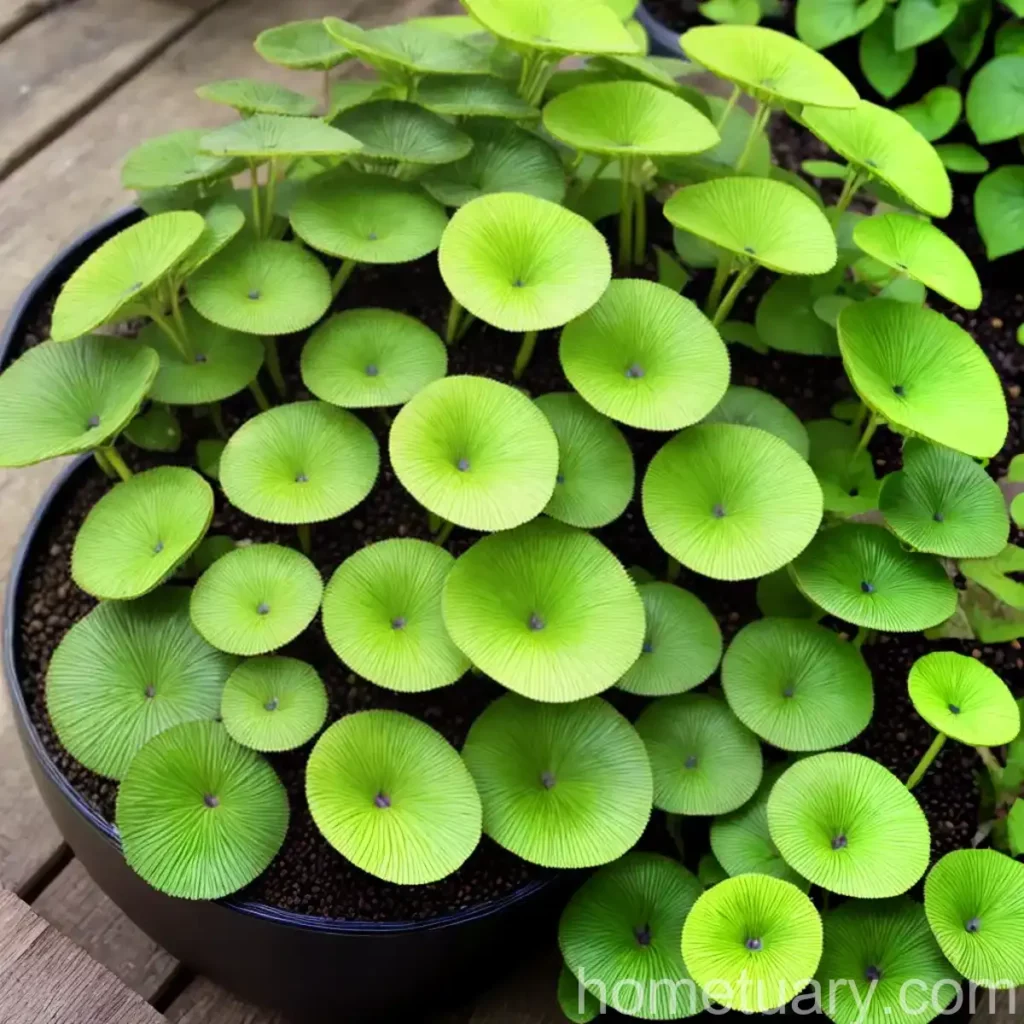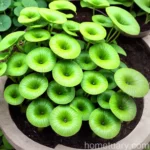The Fascinating World of Pilea (Pilea mollis ‘Moon Valley’)
What is Pilea (Pilea mollis ‘Moon Valley’)?
Pilea (Pilea mollis ‘Moon Valley’) is a delightful trailing houseplant known for its unique and attractive foliage. With its vibrant green leaves and easy-going nature, this plant has gained popularity among both novice and experienced plant enthusiasts. Also called Moon Valley plant, Pilea mollis is cherished for its low-maintenance attributes and decorative appeal.
Key Takeaways – Pilea (Pilea mollis ‘Moon Valley’)
- Common Name: Pilea (Pilea mollis ‘Moon Valley’)
- Scientific Name: Pilea mollis ‘Moon Valley’
- Care Level: Easy
- Sunlight: Indirect/Part Sunlight
- Watering: Moderate
- Soil Type: Well-draining
- Propagation: Stem cuttings
- Common Uses: Indoor decoration, hanging baskets, terrariums
- Growth Habit: Trailing
- Benefits: Air-purifying, pet-friendly
Culture
Uses
Pilea (Pilea mollis ‘Moon Valley’) is widely used for interior decoration owing to its stunning foliage and low maintenance requirements. It is commonly placed in hanging baskets, terrariums, and as a desk or tabletop accent to enhance indoor spaces.
Water
Being a tropical plant, Pilea mollis ‘Moon Valley’ requires consistently moist but not waterlogged soil. Allow the soil to dry out slightly before watering again. It is crucial to maintain a balance as overwatering can lead to root rot, while underwatering can cause the leaves to droop and wilt.
Sunlight
This plant thrives in indirect or filtered sunlight. Exposure to direct sunlight can scorch its delicate leaves. Place it near a window with sheer curtains or in an area with dappled light to ensure optimal growth and foliage health.
Fertilizer
During the growing season, from spring to early autumn, fertilize Pilea (Pilea mollis ‘Moon Valley’) once every two weeks with a balanced liquid fertilizer at half-strength. Reduce the frequency to once a month during the dormant period in winter.
Soil
A well-draining, lightweight potting mix is ideal for Pilea mollis ‘Moon Valley’. It’s important to avoid compacted or heavy soils that can hinder drainage and lead to waterlogged conditions, causing distress to the plant roots.
Pruning
Pruning is vital to maintain the plant’s shape and encourage bushier growth. Trim back leggy stems and remove any damaged or withered leaves. Regular pruning also helps to control the plant’s size and enhance its overall appearance.
Propagation
Pilea (Pilea mollis ‘Moon Valley’) can be easily propagated through stem cuttings. Select a healthy stem and snip it just below a node. Place the cutting in water or moist soil, and roots should develop within a few weeks. This method allows you to expand your collection or share the joy of nurturing this delightful plant with friends and family.
Container
When choosing a container for Pilea (Pilea mollis ‘Moon Valley’), opt for one with drainage holes to prevent water from accumulating at the roots. Select a pot that provides ample room for root growth while not being overly large, as the excess soil can retain moisture, potentially causing root rot.
Popularity
Pilea (Pilea mollis ‘Moon Valley’) has surged in popularity over the past few years, becoming a sought-after addition to indoor plant collections. Its endearing appearance, adaptability to various indoor conditions, and ease of care have contributed to its rise as a favored choice for both new and seasoned plant enthusiasts.
Common Diseases
Disease Diagnosis
Pilea mollis ‘Moon Valley’ is susceptible to certain diseases, including powdery mildew, leaf spot, and root rot. Prompt identification of these issues is crucial for effective management. Common symptoms include white powdery patches on leaves, dark spots or lesions, and wilting or yellowing of foliage.
Common Pests
Pilea (Pilea mollis ‘Moon Valley’) may encounter pests such as spider mites, aphids, and mealybugs. Regular inspection of the plant, particularly the undersides of leaves and along stems, is important to detect pests early. Additionally, practicing good cultural care and maintaining a clean environment can help deter infestations.
Botanist’s Tips
- Humidity Requirements: Pilea mollis ‘Moon Valley’ thrives in environments with moderate to high humidity levels. Regular misting or placing the pot on a tray filled with pebbles and water can elevate the humidity around the plant.
- Sunlight Preferences: Indirect or filtered sunlight is ideal for Pilea mollis ‘Moon Valley’. Adequate light is essential for vibrant foliage, but protection from direct sun is necessary to prevent leaf damage.
Fun Facts
- Pilea (Pilea mollis ‘Moon Valley’) is often referred to as the “Friendship Plant” due to its ease of propagation, allowing friends to share cuttings with each other and symbolizing the growth of friendship.
- In some cultures, Pilea plants are believed to bring good fortune and prosperity to the household, making them a popular choice for housewarming gifts.
Links to External Resources
- Pilea Care Guide – The Sill
- Pilea: A Field Guide to Planting, Care & Design – Houseplant 411
- Growing Pilea – Gardening Know How
In conclusion, Pilea (Pilea mollis ‘Moon Valley’) is a captivating plant that embodies natural beauty and simplicity. Its charm, coupled with its undemanding care requirements, makes it an ideal choice for anyone seeking to introduce a touch of greenery and elegance into their indoor spaces. Whether adorning a hanging basket, positioned as a desk ornament, or creating a lush ensemble in a terrarium, this delightful plant has the ability to enliven and enrich its surroundings effortlessly. As you embark on your journey with Pilea mollis ‘Moon Valley’, revel in the joy of nurturing and witnessing the beauty of this endearing houseplant.















